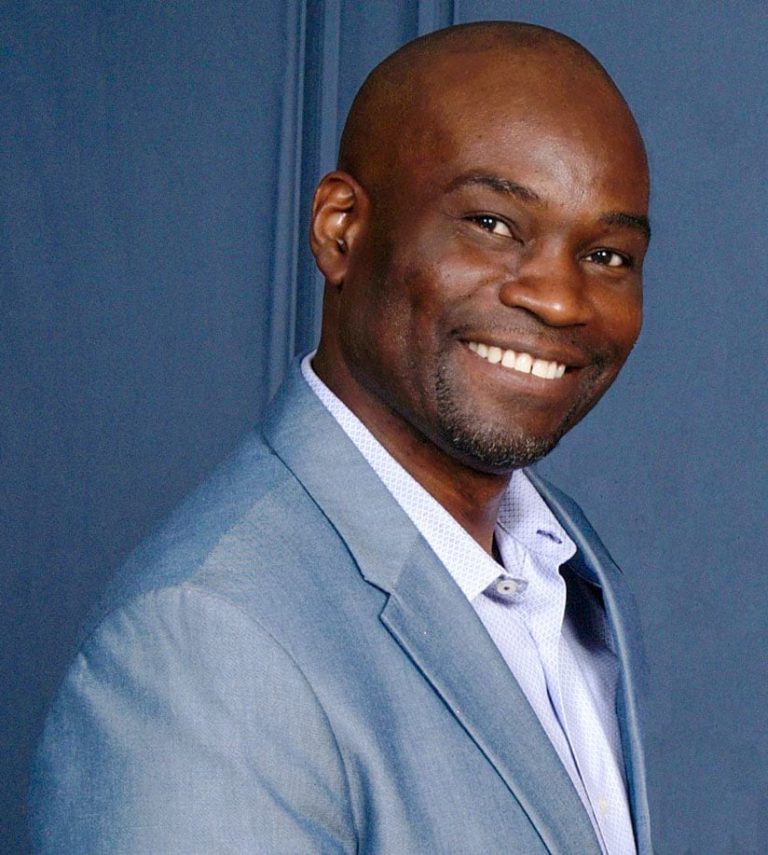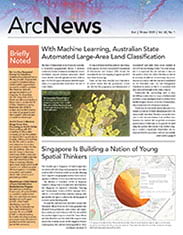Curious, eager to learn, willing to take chances, and quick to act. Those are qualities that describe Ian Wint, GIS manager at the City of Fort Lauderdale, Florida. And that’s how he’s forged a successful 24-year career in GIS.
“Don’t be afraid to fail. Try new things,” he advises other GIS practitioners. And for managers, “Don’t admonish your staff for a failure if you’re trying something risky. You’ve got to create an environment where people feel comfortable taking risks.”
In his 20 years at the City of Fort Lauderdale—19 of which he’s spent as the GIS manager—Wint has overseen the steady growth and development of GIS there. He’s taken plenty of risks, being an early adopter of new technology and opening up GIS to other departments and city leaders before that was the norm, and that’s paid off immensely.
“We’ve got GIS proliferated throughout the city,” he said. “It’s one of those things where success breeds success. One colleague sees something happening in one area, finds out that their colleague received assistance from GIS, and then they think, oh, that could work for me, too!”
Wint has always seen GIS as more than a mapping tool.

“After my initial introduction to GIS, I saw it as something that I thought could live on its own to solve problems,” he said.
Wint first became aware of GIS when studying urban planning at the University of Waterloo in Ontario, Canada. A couple of his geography teachers in high school, who queried him on what he wanted to be after he did well on an exam, told him about urban planning.
“They probed enough in a way that would help them focus me into something that would be super interesting,” Wint recalled.
And they were right. Wint even remembers when he first discovered GIS: in the winter semester of his second year. He saw a class on his schedule that merged urban planning and computers, and he thought that sounded really interesting.
“I showed up and was immediately hooked,” he said.
To help pay his way through school and gain experience in the field, Wint got a job as a GIS technician at a company called Geomatics International, where his main responsibility was to digitize data. But he also wanted to learn about what others were doing and show value apart from digitizing, so he looked for ways to automate tasks.
This enterprising nature helped catapult Wint into his first job out of college, which could have easily intimidated any bright-eyed and bushy-tailed recent grad. A boutique community planning firm called Glatting Jackson was looking to introduce GIS to the company via its new environmental planning department.
“My job was to come in and springboard that,” said Wint. He was the sole GIS hire at the time. “My role was to bring GIS in and then work with project managers to show how GIS could provide added benefit to client work.”
When he thinks back on that being his first real job, Wint says he had a lot of confidence in his education and good preparation from his mentor, professor Brent Hall (who is now the director of education and research at Esri Canada).
“Sometimes you don’t know what you don’t know, and ignorance is bliss,” he said with a laugh.
A few years later, while posting a job opening for his team, he came across a GIS specialist listing for the City of Fort Lauderdale.
“When I read the job description, I thought, wow, this would help expose me to applying GIS to a variety of areas, not just in planning,” Wint said. “A decent-sized city has so many different departments—fire, police, utilities, public works, finance—and so many different disciplines, I thought it would be exciting and a challenge to apply GIS to all those different disciplines.”
So he went for it and got the job. He was only the second person the city had hired to do GIS. Six months in, the GIS coordinator who had brought him on resigned, so Wint became the acting GIS coordinator.
“I was doing both jobs by myself for a little over a year and a half” he said. “I learned a lot during that time!”
The city conducted a public search to find a new coordinator and landed on Wint as the best candidate for the job. And he’s been leading the way in building up GIS at the City of Fort Lauderdale ever since.
Wint has taken GIS from being a mapping tool that only the GIS department used to a platform that his peers and even city leaders find indispensable. What that took was getting the technology into people’s hands.
“If you come and ask me for a map, and I create one and hand it to you, you’re happy that you have a map, but you don’t care what went into making it. If you’re a city manager or department head, well, you’ve got your map, and you don’t think about me again until you need another map,” Wint explained. “But if I can hand you GIS technology that you’re using and that becomes part of your daily job, it becomes something that you rely on, something tangible that you need. What that does is, whenever I need to get support for funding or things of that nature, then you’re more likely to understand why I need that funding.”
One of the earliest GIS projects Wint did at the city is one that has paid dividends over the years. He and his team inventoried Fort Lauderdale’s water and sewer infrastructure, most of which is buried. This gave field crews something to rely on to understand where the city’s assets are. It also gave engineers and others base data on asset location.
“What we’ve done is we’ve built on that through the years,” said Wint. “Thanks to the advancement of Esri technology, we have field crews that go out there using Survey123 [for ArcGIS] and Collector [for ArcGIS] to do inspections.”
Managers and supervisors can also track progress using dashboards. And Wint says the people who use the technology now tell him that they wouldn’t be able to do their jobs without it.
“We’ve had hiccups where we’ve had to take a Survey123 solution down for a day,” said Wint. “And as much as some people would see this as a negative, I see it as a positive when people are calling the help desk about that, saying they can’t get their work done.”
Wint and his team have deployed solutions for fire hydrant inspections, which help find low water pressure patterns throughout the city; parking, which the customer service team can use to solve discrepancies when residents contest parking violations; the building department, which can now easily see whether a development can be built on certain property types; and more. The GIS department also assists tremendously before, during, and after hurricanes.
For Hurricane Irma in 2017, Wint’s team helped first responders gain situational awareness before the storm, telling police officers where criminal activity was happening so they could get a handle on it before lockdown and showing wind levels to the fire department so it could send out the right equipment. During the storm, GIS helped utilities monitor sewer pump stations to mitigate inundation. And after the hurricane, the technology was instrumental in keeping track of customer service calls about downed trees, inoperable traffic lights, debris, and the like so authorities could act accordingly.
“In times when things are moving very quickly, you want quick visuals,” said Wint. “GIS has become integral for hurricane preparedness and disaster relief.”
As GIS grows more central to business applications that focus on everything from land use to asset management, Wint views that as a good thing.
“It further cements why GIS is needed and the value of GIS in an organization,” he said.
Wint is committed to continuing to develop GIS technology that can help the people around him, who are largely not GIS experts.
“It can make their jobs easier, make them more efficient, and give them access to information they never had before,” he said.

